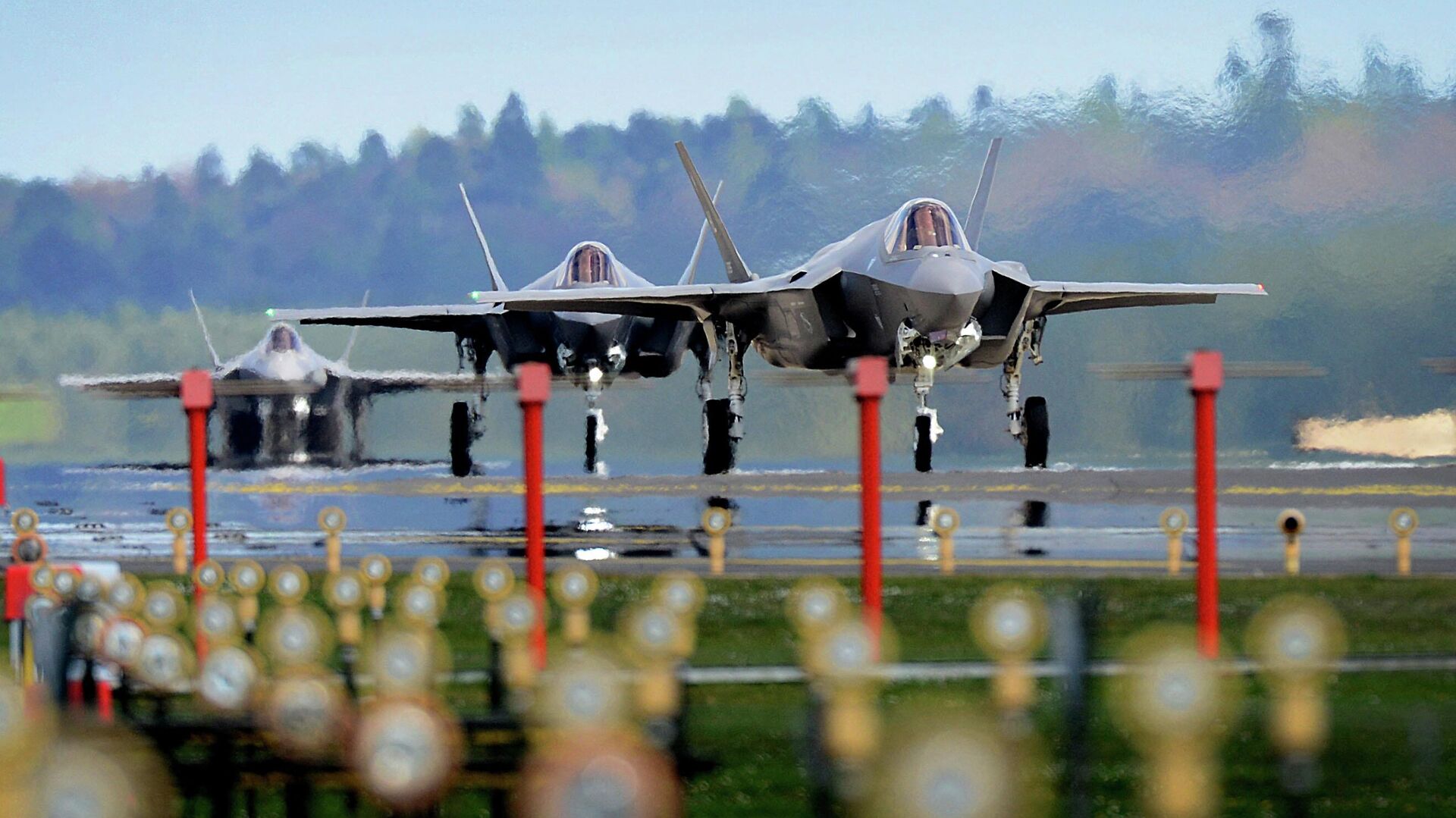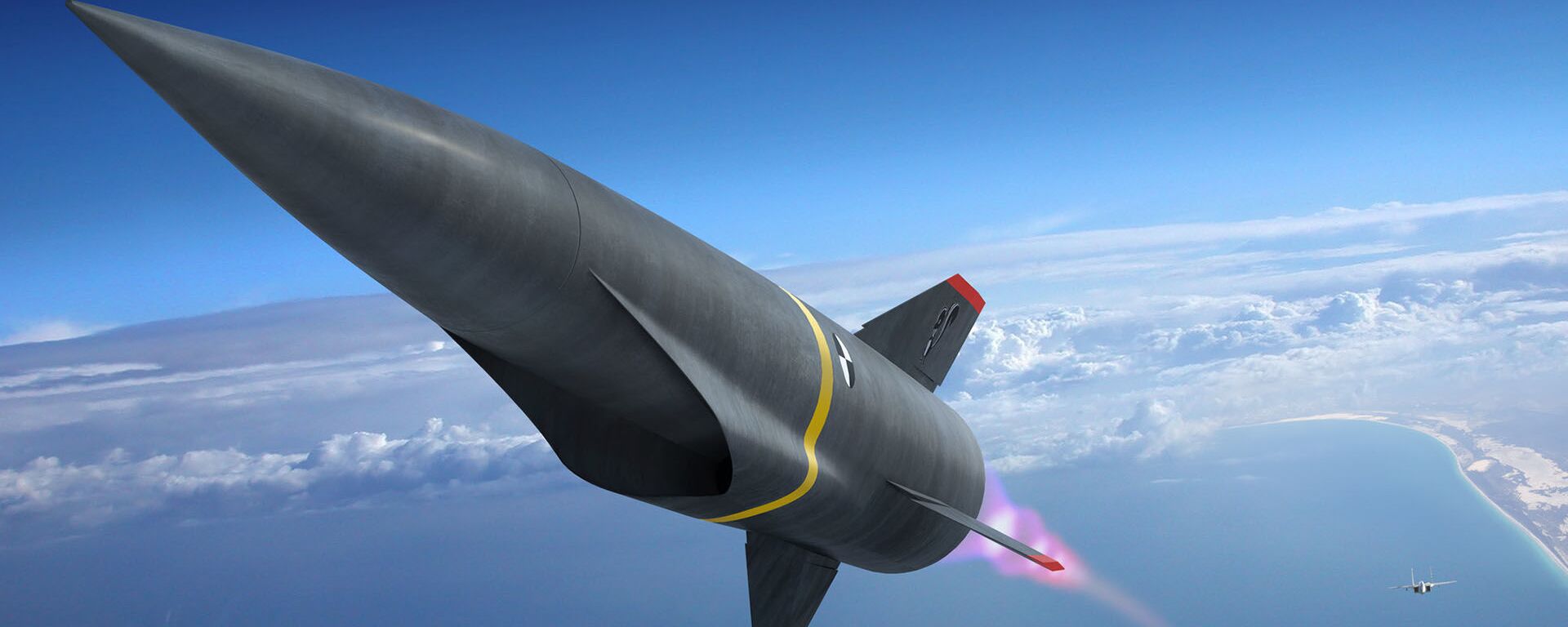https://sputnikglobe.com/20220413/us-to-upgrade-nuclear-arsenal-storage-in-uk-possibly-for-its-newest-bombs-1094719517.html
US to Upgrade Nuclear Arsenal Storage in UK, Possibly for Its Newest Bombs
US to Upgrade Nuclear Arsenal Storage in UK, Possibly for Its Newest Bombs
Sputnik International
In 2008, the US removed its B61 nuclear bombs from Lakenheath air base, ending more than a half-century of keeping a nuclear arsenal in the country. The... 13.04.2022, Sputnik International
2022-04-13T03:35+0000
2022-04-13T03:35+0000
2023-12-20T12:17+0000
us
nuclear weapons
bunker
military & intelligence
us military base
united kingdom (uk)
military base
https://cdn1.img.sputnikglobe.com/img/07e6/04/0d/1094719710_0:139:2635:1621_1920x0_80_0_0_3e716727c9988ef9bfd828bb116d49cf.jpg
According to fiscal year 2023 US defense budget records, military bunkers in the UK are being refurbished so that they can once again be used to store US nuclear weapons after a 14-year hiatus.As the document indicates, the UK was added to the list of countries where 13-year NATO infrastructure investment is underway at "special weapons" storage sites, alongside Belgium, Germany, Italy, the Netherlands, and Turkey - all the countries where the US stores an estimated 100 B61 nuclear bombs.According to Hans Kristensen, the director of the nuclear information project at the Federation of American Scientists (FAS), the US airbase at RAF Lakenheath, 100 kilometers northeast of London, is mentioned as being upgraded.According to Kristensen, this is a significant shift, as the list of "active sites" in the 2016 contract for the modernization of Europe's nuclear weapons storage site did not include RAF Lakenheath.Lakenheath, which had 33 subterranean storage vaults in the 1990s, was used by the US Air Force to store nuclear gravity bombs. There reportedly were 110 B61 gravity bombs in the vaults by the early 2000s ready to be delivered by F-15E aircraft of the 48th Fighter Wing.As of now, it remains unknown whether nuclear weapons have been returned to the site or if NATO is upgrading it to be ready to receive nuclear weapons in the future if needed.Moreover, the spoken B61 has been given a fresh lease on life as part of the US nuclear modernization program, with a guidance system, the B61-12 type, set to go into full production in May.According to the FAS, the nuclear upgrade comes as RAF Lakenheath prepares to be the first US Air Force installation in Europe to receive the nuclear-capable F-35A Lightning fighter jet, as in December 2021, the first fifth-generation fighter-bombers arrived. At the base, the 495th Fighter Squadron of the 48th Fighter Wing will reportedly be made up of 24 F-35As. Within the next year, the US Air Force plans to begin training nuclear units in Europe in preparation for the new B61-12s. It is reportedly probable that the first B61-12 bombs will be delivered to Europe in 2023, replacing the B61-3/-4 bombs now in use.In response to Russian President Vladimir Putin's warning that Russia put its nuclear forces on high alert following the launch of the special military operation in Ukraine, the Biden administration has been careful not to take any measures that may be regarded as escalatory in the nuclear realm.Kristensen said he doubted the Biden administration's plans to enhance the US nuclear stockpile in Europe for the same reason. Instead, he believed the Lakenheath enhancement was designed to give nuclear weapons additional mobility across Europe."One of the things they have talked about is protecting the deterrent against Russia’s improved cruise missiles capabilities," Kristensen said. "So they could be trying to beef up the readiness of more sites without them necessarily receiving nukes, so that they have the options to move things around in a contingency if they need to."
https://sputnikglobe.com/20220405/cnn-reports-us-secretly-tested-hypersonic-missile-in-mid-march-1094488692.html
united kingdom (uk)
Sputnik International
feedback@sputniknews.com
+74956456601
MIA „Rossiya Segodnya“
2022
News
en_EN
Sputnik International
feedback@sputniknews.com
+74956456601
MIA „Rossiya Segodnya“
Sputnik International
feedback@sputniknews.com
+74956456601
MIA „Rossiya Segodnya“
us, nuclear weapons, bunker, military & intelligence, us military base, united kingdom (uk), military base
us, nuclear weapons, bunker, military & intelligence, us military base, united kingdom (uk), military base
US to Upgrade Nuclear Arsenal Storage in UK, Possibly for Its Newest Bombs
03:35 GMT 13.04.2022 (Updated: 12:17 GMT 20.12.2023) Kirill Kurevlev
Managing Editor
In 2008, the US removed its B61 nuclear bombs from Lakenheath air base, ending more than a half-century of keeping a nuclear arsenal in the country. The gravity bombs were largely regarded as militarily obsolete at the time of the pullout, and prospects for further nuclear weapons disarmament were high.
According to fiscal year 2023
US defense budget records, military bunkers in the UK are being refurbished so that they can once again be used to store US nuclear weapons after a 14-year hiatus.
As the document indicates, the UK was added to the list of countries where 13-year NATO infrastructure investment is underway at "special weapons" storage sites, alongside Belgium, Germany, Italy, the Netherlands, and Turkey - all the countries where the US stores an estimated 100 B61 nuclear bombs.
NATO "is wrapping up a 13-year, $384m infrastructure investment program at storage sites in Belgium, Germany, Italy, the Netherlands, the UK, and Turkey to upgrade security measures, communication systems, and facilities," the budget request for 2023 reads.
According to
Hans Kristensen, the director of the nuclear information project at the Federation of American Scientists (FAS), the US airbase at RAF Lakenheath, 100 kilometers northeast of London, is mentioned as being upgraded.
According to Kristensen, this is a significant shift, as the list of "active sites" in the 2016 contract for the modernization of Europe's nuclear weapons storage site did not include RAF Lakenheath.
Lakenheath, which had 33 subterranean storage vaults in the 1990s, was used by the US Air Force to store nuclear gravity bombs. There reportedly were 110 B61 gravity bombs in the vaults by the early 2000s ready to be delivered by F-15E aircraft of the 48th Fighter Wing.
As of now, it remains unknown whether nuclear weapons have been returned to the site or if NATO is upgrading it to be ready to receive nuclear weapons in the future if needed.
Moreover, the spoken B61 has been given a fresh lease on life as part of the US nuclear modernization program, with a guidance system, the B61-12 type, set to go into full production in May.
According to the FAS, the nuclear upgrade comes as RAF Lakenheath prepares to be the first US Air Force installation in Europe to receive the nuclear-capable F-35A Lightning fighter jet, as in December 2021, the first fifth-generation fighter-bombers arrived.
At the base, the 495th Fighter Squadron of the 48th Fighter Wing will reportedly be made up of 24 F-35As. Within the next year, the US Air Force plans to begin training nuclear units in Europe in preparation for the new B61-12s.
It is reportedly probable that the first B61-12 bombs will be delivered to Europe in 2023, replacing the B61-3/-4 bombs now in use.
In response to Russian President Vladimir Putin's warning that Russia put its nuclear forces on high alert following the launch of the special military operation in Ukraine, the Biden administration has been careful not to take any measures that may be regarded as escalatory in the nuclear realm.
Kristensen said he doubted the Biden administration's plans to enhance the US nuclear stockpile in Europe for the same reason. Instead, he believed the Lakenheath enhancement was designed to give nuclear weapons additional mobility across Europe.
"One of the things they have talked about is protecting the deterrent against Russia’s improved cruise missiles capabilities," Kristensen said. "So they could be trying to beef up the readiness of more sites without them necessarily receiving nukes, so that they have the options to move things around in a contingency if they need to."


